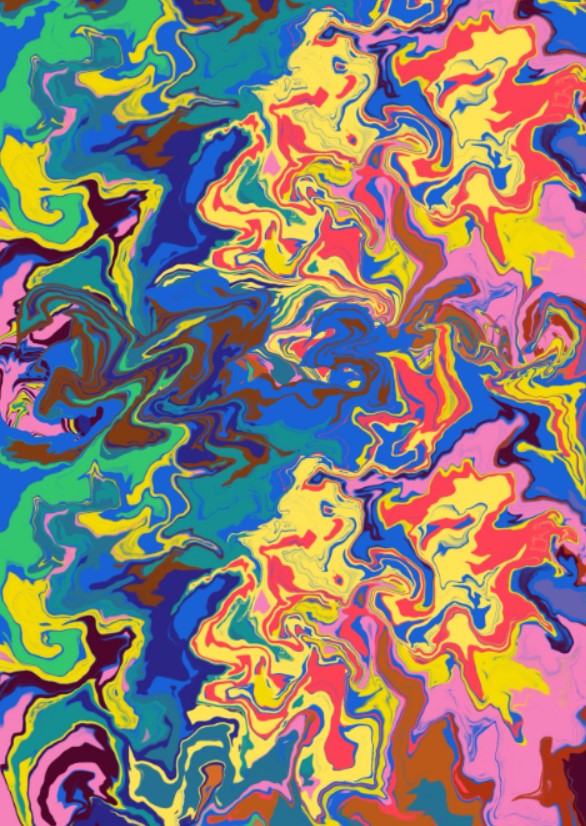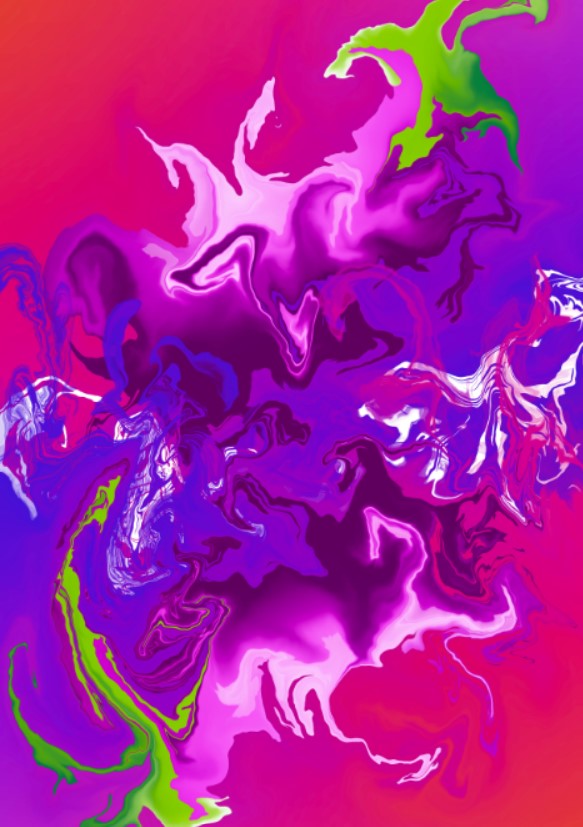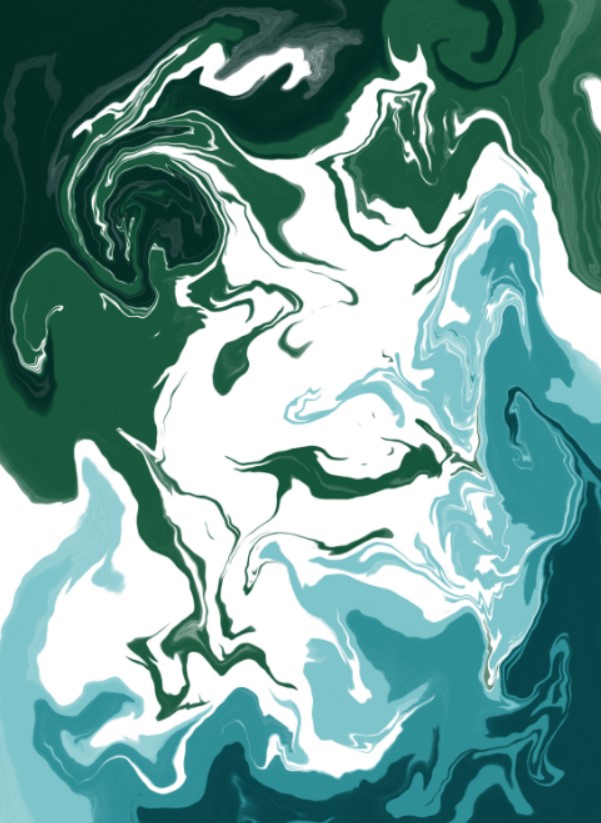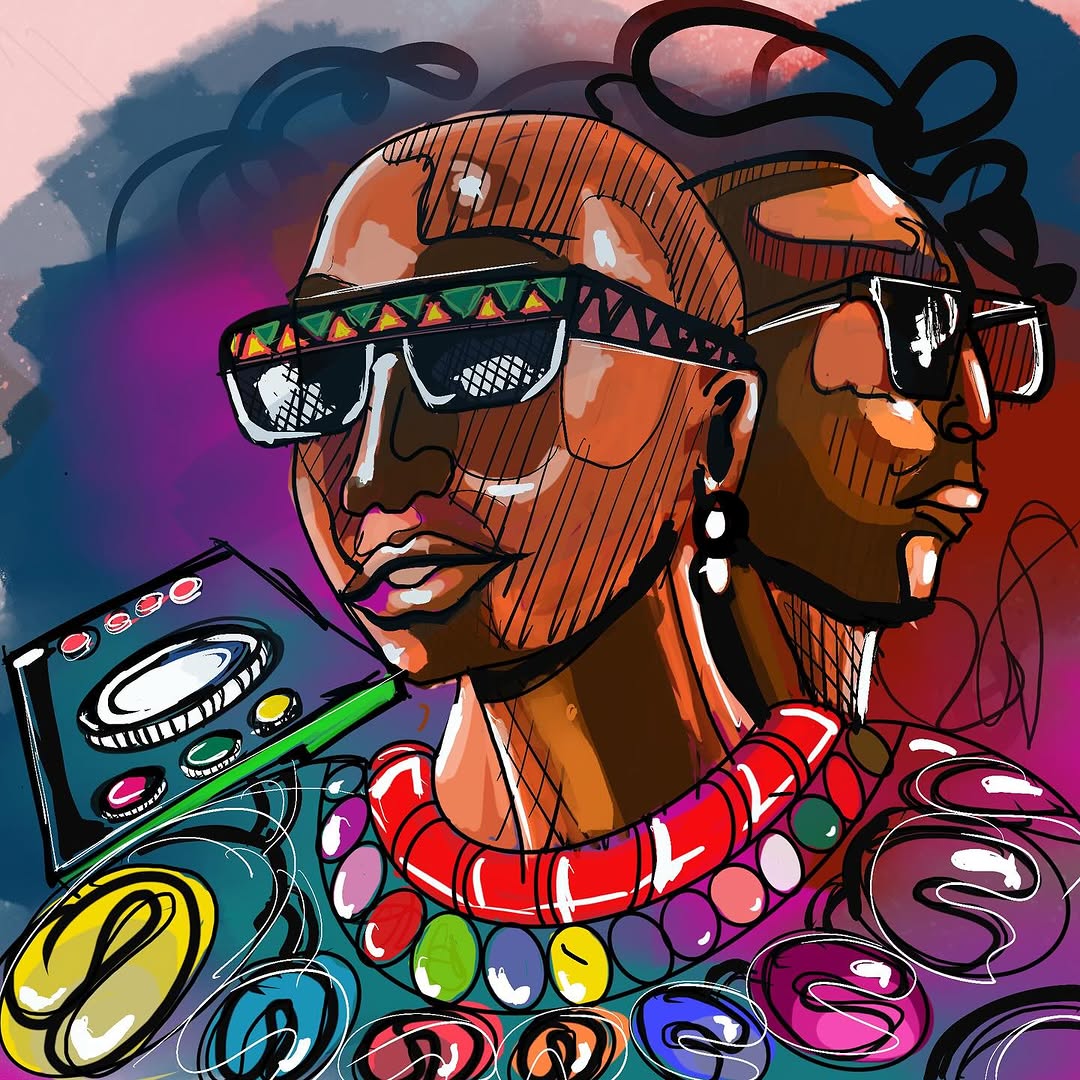Adetutu David Collins’ work, whether digital or acrylic media, are instances of abstract expressionism whose applications of the impulses of shape, shade, and motion, reveals a unique artistic mind which will only get better with more experience.
By Chimezie Chika
Some of the art that Nigerian artist, Adetutu David Collins, has featured in exhibitions over the past year shows a propensity towards self-expressive explorations of the world he lives and observes, whether in Nigeria or the whirl of influences that define the urbanscapes of the UK. Adetutu’s neo-expressionism results directly from his interest in musical rhythms, the fluidity of movements, and the evocations of feelings in the grading of colours and shapes.
These interests are most eloquently expressed in a tripartite series of digital paintings in which the artist attempts to merge music, movement, feelings, colours, and nature. In the painting “Euphoria”, a kind of filmy phosphorescence brims in the wavelike sinuosity of colour swirls, like the effect of oil on water. This alone, on the surface level, makes the painting out to be an ecological commentary on the despoliation of natural environments through crude oil exploitation. The artist, however, considers the proportions herein in philosophical terms.

His approach is interpretive, it appears, rather than explorative; therefore the painting becomes an understanding of the idea of the euphoric state in abstract terms. In this sense, the colour swirls represent the ever-changing nature of the state, its spontaneity and temporality. The vibrant energy seen in how the colours roil in and out of each other visualises how euphoria comes and goes with the heightening or lowering of human emotions.
In the second painting, “Chlorophyll and Cosmos”, Adetutu David Collins’ replication of the iridescence of the oil rainbow effect is undeniable. He sees his work here as a presentation of the relationship between nature and the vast unknown.
His experiment here in what might best be identified as off-colour combinations works to create the effect of ecological decimation through chemicals. It is evident especially in the interaction between peripheral shades of green and the overwhelming preponderance of shades of indigo, violets, and blues.
Adetutu David Collins’ explanation makes a different kind of sense in its allusions to astronomical and spatial elements. The roiling shades of green, in his reckoning, are tendrils of plant life, weaving through cosmic purples, pinks, and blues, and symbolising the coexistence of earthly vitality and celestial mystery.

The merger of nature and spirituality might seem somewhat overreached, but the artist feels that the painting’s visually liquefied forms help to blur the boundaries between the finite and the infinite levels of nature, from the smallest instances of life on our planet to the more galactic instances of nature’s vastness in space. “Chlorophyll and Cosmos”, as with many of this artist’s work, shows ambition and promise.
The last piece in the series, titled “Ethereal Currents”, continues Adetutu David Collins’ perennial themes of fluidity, emotive undercurrents, and levels of nature. Here whorls of colours are pastel-like, showing white, and shades of grey, green, and blue.
It is a representation of the sensations of flowing energy and natural forces, rooted in organic experiences and the complementarity of emotive expressions and the certainties and uncertainties of nature’s creative impulses.

Another dimension of Adetutu’s exploration of abstract motion comes from his grunge art—which bears the influences of cultural miscegenation in Western spheres. The musical influences here could be said to be the UK Trap scene, while unique working class life provides the overarching background.
On face value, a lot of Adetutu David Collins’ art in this vein pose as either graffiti-like scribbling or the result of liberal use of spray-painting. In one of these, he recasts the iconic Jordan logo from the lenses of grunge aesthetics. In another, it is a cartoonish signature of his name—David Tutu—scribbled in red in a background of purple, violets, greens, spots of black, orange, yellow, red, and others.
One of Adetutu David Collins’ most remarkable grunge studies is evidently inspired by music and music cover art aesthetics. His work here features two busts in sunglasses painted in the usual cartoonish proportions of grunge. Somewhere to the left, there is a cartoonish sound mixer painted into the shoulders of the first figure. Another painting (a digital drawing in the real sense) typifies grunge in a most obvious way: here, the colour choices—white, black, yellow—are few and simple.

The drawing features the different food choices in the UK: noodles, shrimp, coffee, pizza, doughnuts, chips, soda, sandwich, cheese, porridge, spaghetti, etc. But Adetutu’s grunge art pushes beyond these subjects into his more abstract paintings, which sometimes spots graffiti-like lines and inscriptions, such as we see in the “Work Fuckn Harder”.
This happens when his two major mediums—digital art and acrylic painting—meet in one canvas. Adetutu David Collins’ acrylic work is quite accomplished. One of the works he featured at an exhibition at the Unit London Gallery in 2022 has images of the sharp-angled masks in cubist paintings. The result only shows this artist’s potential, if he had ventured into more studies in cubism.
If he takes a leaf from the most remarkable work in his oeuvre, then his art might head into positively surprising directions. The work is acrylic on canvas and the colours on display as a kaleidoscopic spectrum; the compositional style is such that the work has a dual face based on perspective.

From certain angles—especially from afar—the painting looks as abstract as anything by Cy Twombly. From close, having the appearance of thousands, one could certainly make out an African crowd in traditional clothes. There is some motion here, as if the figures are milling about. But while the surroundings are uncertain, the only certainty remains the vertical slashes of colour that differentiate the figures in the abstract crowd from the others.
Adetutu David Collins’ work, whether digital or acrylic media, are instances of abstract expressionism whose applications of the impulses of shape, shade, and motion, reveals a unique artistic mind which will only get better with more experience.
Chimezie Chika is a staff writer at Afrocritik. His short stories and essays have appeared in or forthcoming from, amongst other places, The Weganda Review, The Republic, Terrain.org, Isele Magazine, Lolwe, Fahmidan Journal, Efiko Magazine, Dappled Things, and Channel Magazine. He is the fiction editor of Ngiga Review. His interests range from culture, history, to art, literature, and the environment. You can find him on X @chimeziechika1




